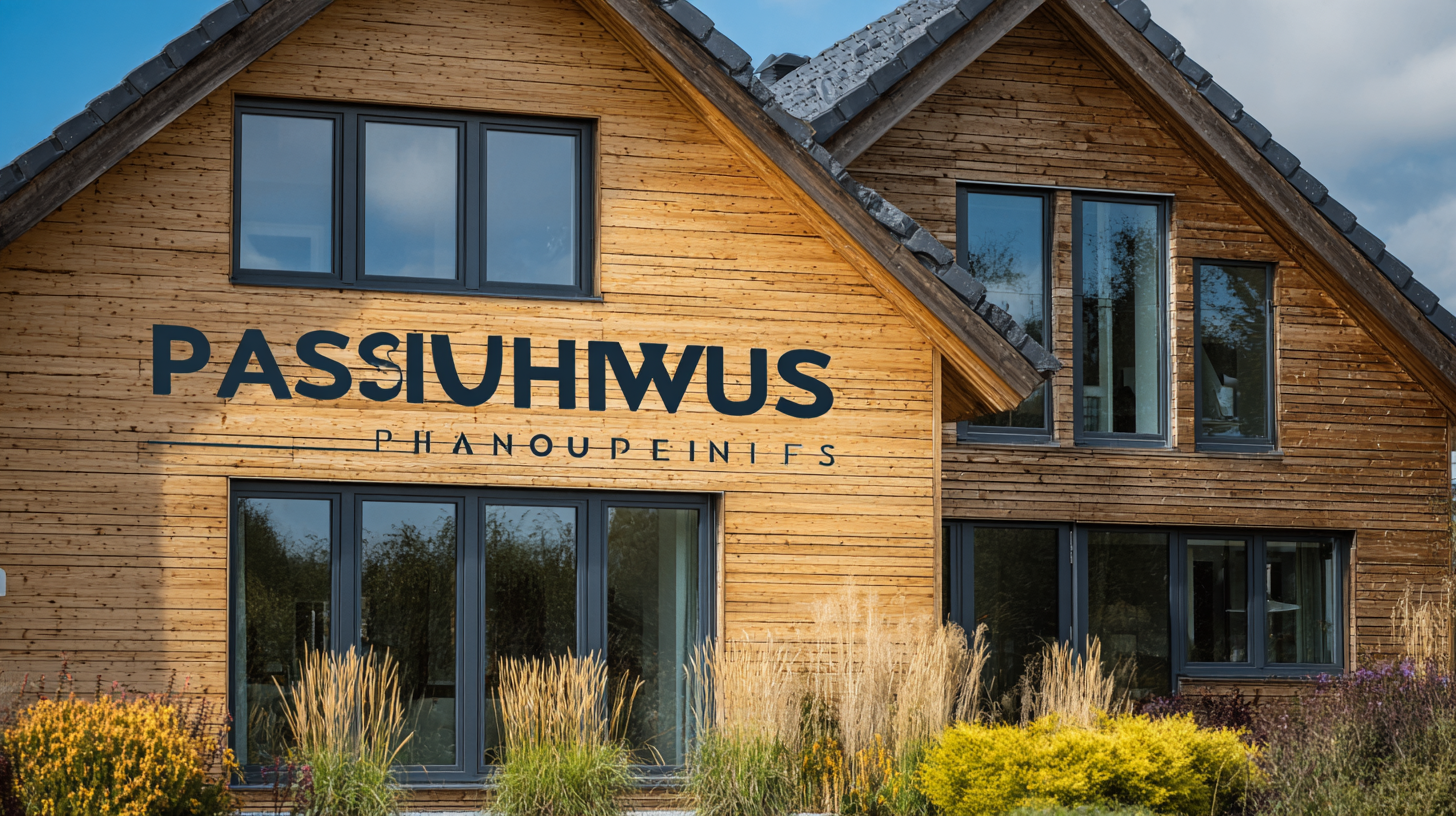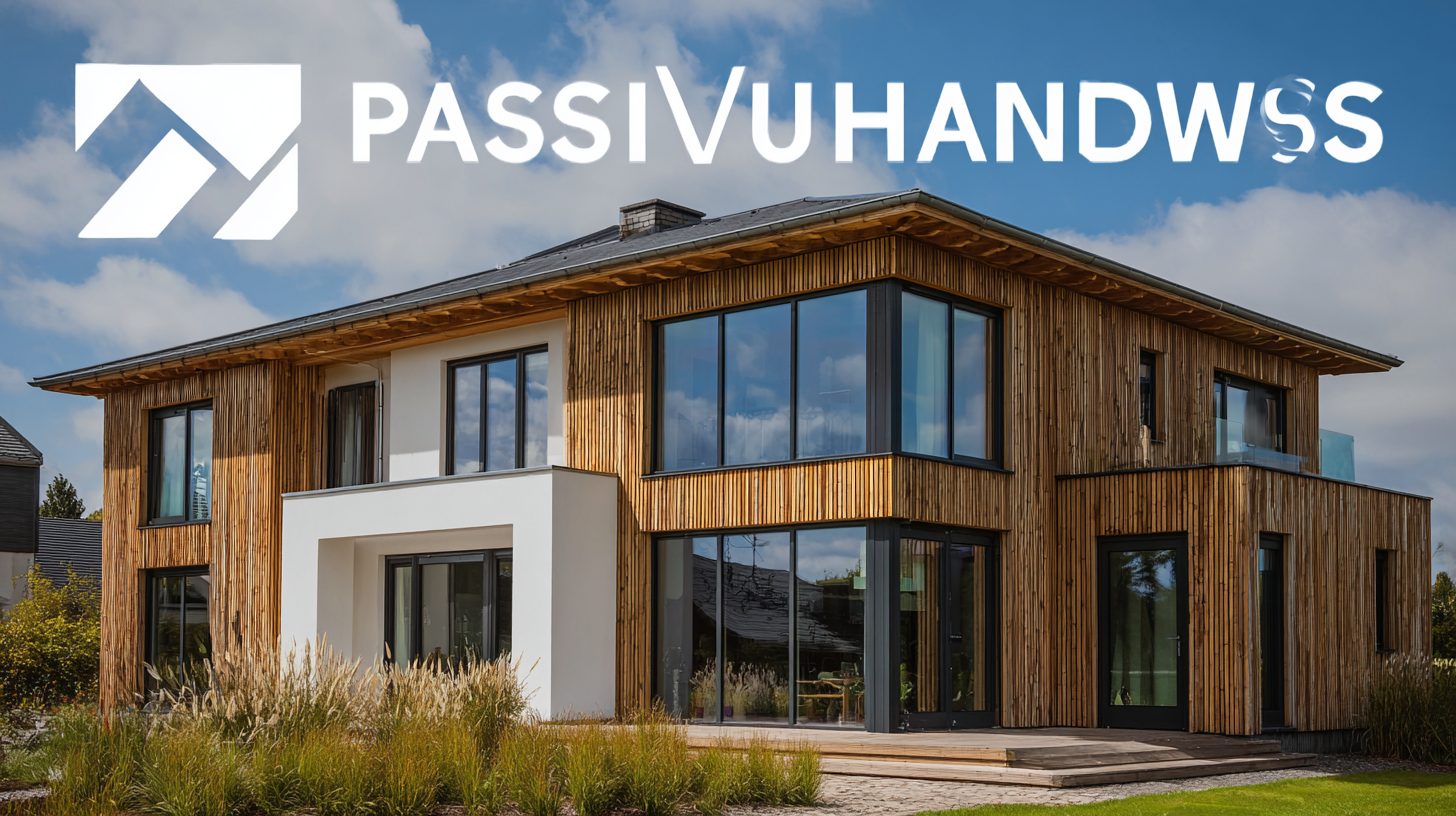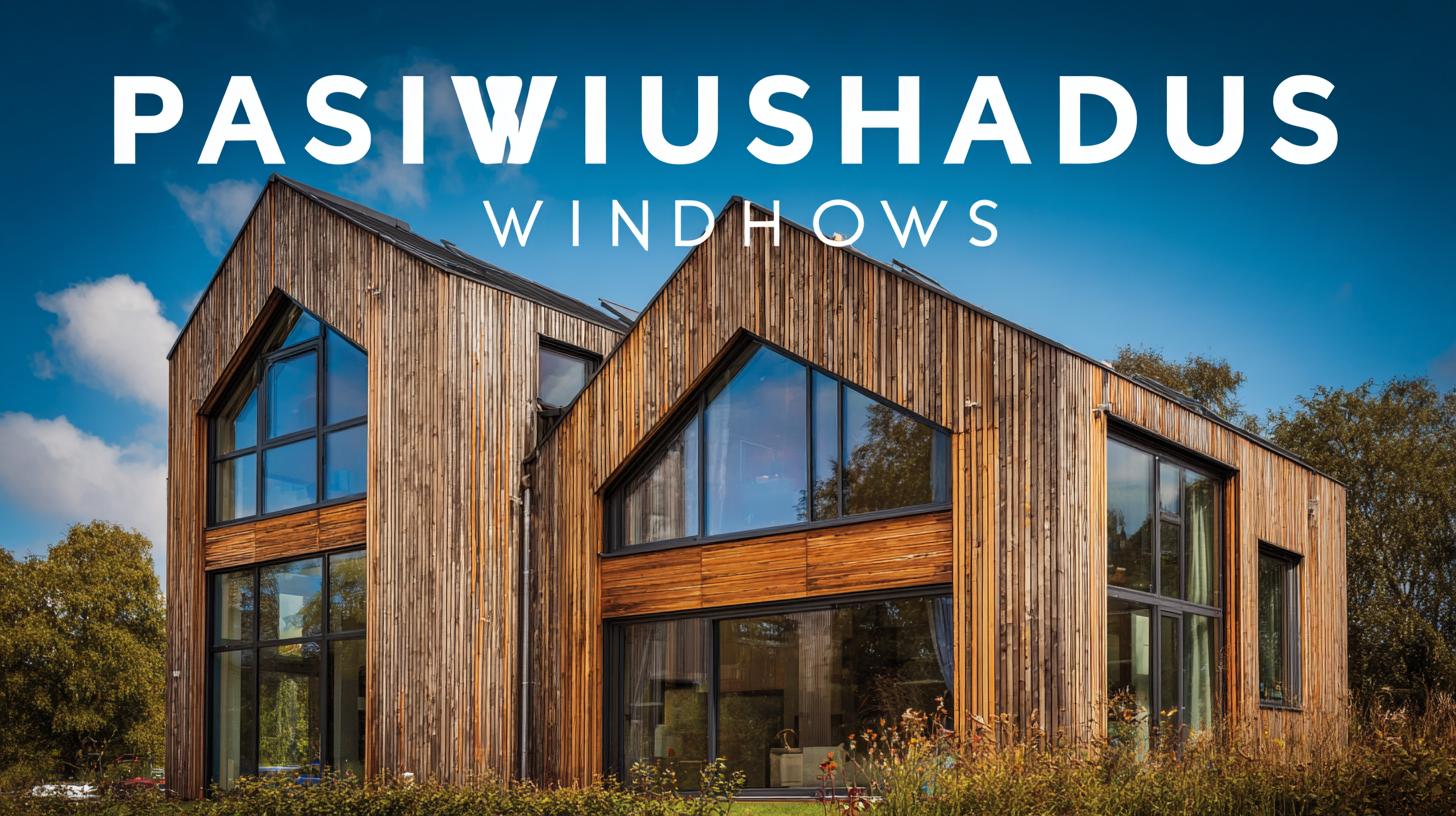In the realm of sustainable building design, selecting the right windows is crucial for achieving Passivhaus standards, which prioritize energy efficiency and indoor comfort. According to the Passive House Institute, buildings designed with Passivhaus principles can reduce energy consumption for heating and cooling by up to 75% compared to conventional buildings. This remarkable efficiency hinges not only on insulation and ventilation but also significantly on the performance of Passivhaus windows. Studies indicate that up to 80% of a building's heat loss can occur through poorly insulated windows, making the choice of high-quality, certified windows a fundamental aspect of Passivhaus construction. As such, understanding the critical features and specifications of Passivhaus windows is essential for architects, builders, and homeowners looking to create energy-efficient, cost-effective spaces. In this blog, we will explore the top strategies for choosing the best Passivhaus windows for your next project, providing valuable insights to ensure successful implementation of these innovative building solutions.

When selecting windows for a Passivhaus project, understanding the Passivhaus standards is crucial. These standards prioritize energy efficiency, requiring windows to exhibit exceptional thermal performance. To meet such stringent requirements, look for windows that have a U-value of less than 0.8 W/m²K. This value indicates the window's insulation effectiveness, allowing you to maintain a comfortable indoor climate while minimizing energy consumption.
Tip: Always consider the orientation of your windows. South-facing windows can harness sunlight for passive heating, whereas north-facing options can help reduce heat loss. Installing overhangs or external shading devices can further optimize solar gain and prevent overheating in warmer months.
Additionally, frame materials play a significant role in window selection. Choose materials with low thermal conductivity, such as fiberglass or wood-aluminum composites, which help achieve better insulation. Ensure that the windows you select align with the overall design and air tightness of your building, as any gaps can undermine the efficiency of your Passivhaus.
Tip: Don’t overlook the importance of triple glazing. While more costly upfront, triple-glazed windows significantly enhance energy efficiency, sound insulation, and comfort in a Passivhaus design.
When selecting windows for a Passivhaus project, understanding the key characteristics of high-performance windows is essential. These windows not only contribute to the building's energy efficiency but also enhance comfort and durability. One of the primary features to consider is the insulation value, measured by the U-value. High-performance Passivhaus windows typically achieve a U-value of 0.80 W/m²K or lower, ensuring minimal heat loss in winter and keeping interiors comfortably cool during summer.
Another vital characteristic is the solar heat gain coefficient (SHGC), which indicates how much solar radiation passes through the window. Optimal SHGC values can vary based on climate, but typically, a lower number is desirable for hot climates, while a higher value can be beneficial in colder areas. Additionally, pay attention to the frame materials; triple-glazed windows with insulated frames improve thermal performance. Finally, the airtightness of the window unit is critical, as it prevents air leaks that can lead to energy inefficiency, making it a crucial factor in the overall effectiveness of the Passivhaus design.
When it comes to selecting the best windows for your Passivhaus project, understanding material options is crucial. Different materials offer distinct benefits and drawbacks that can significantly impact energy efficiency, durability, and aesthetic appeal. Common choices include wood, PVC, and aluminum, each presenting unique challenges in terms of thermal performance and maintenance.
 For instance, while wooden windows provide excellent insulation and a classic look, they require regular upkeep to prevent decay. On the other hand, PVC offers low maintenance and strong insulation properties, though it might not meet aesthetic preferences for some homeowners.
For instance, while wooden windows provide excellent insulation and a classic look, they require regular upkeep to prevent decay. On the other hand, PVC offers low maintenance and strong insulation properties, though it might not meet aesthetic preferences for some homeowners.
Tips for choosing the right material include considering the local climate and building orientation. In warmer regions, materials with high thermal resistance are vital to minimize heat gain and optimize comfort. Additionally, ensure that the windows comply with Passivhaus standards, focusing on airtightness and minimizing thermal bridging. Another tip is to prioritize the window frame's quality; high-performance frames can significantly enhance a building’s energy efficiency. By thoughtfully weighing the pros and cons of each material, you can make an informed decision that aligns with the sustainability goals of your project.
When selecting windows for your Passivhaus project, understanding energy efficiency ratings is crucial. The most recognized rating system is the U-value, which measures the rate of heat transfer through a window. The lower the U-value, the better the window's insulation properties, making it a key consideration for maintaining the high energy performance that Passivhaus demands. Aim for windows with U-values significantly below the building code requirements, ideally around 0.8 W/m²K or lower.
Another important metric is the g-value or solar heat gain coefficient (SHGC), which indicates how much solar heat a window can absorb. While freezing winters might have you craving sunlight, excessive heat gain in summer can lead to increased cooling costs. Choosing windows with an optimal g-value will help balance solar gain and thermal comfort throughout the year. Additionally, consider the frame material, as it can affect both U-values and the overall durability of the windows. For maximum energy efficiency and comfort, look for triple-glazed units with low-emissivity coatings and airtight seals, ensuring your Passivhaus project meets stringent energy standards.

When embarking on a project that prioritizes sustainability, budgeting for sustainably sourced Passivhaus windows is a critical element. As eco-friendly architecture gains momentum, incorporating high-performance windows that meet Passivhaus standards not only enhances energy efficiency but also aligns with environmentally conscious principles. Understanding the long-term savings on energy bills is essential; while the initial investment might be higher, the reductions in heating and cooling costs will yield significant financial benefits over time.
Moreover, as the trend toward eco modular homes continues, integrating sustainable materials can complement the overall budget. These homes emphasize flexibility and affordability, making them an appealing choice for those seeking a smaller ecological footprint. When selecting Passivhaus windows, consider sourcing options that highlight local materials and low-impact production processes. This not only supports the local economy but ensures that the windows are suitable for the specific climate, enhancing their effectiveness. Careful planning and strategic budgeting can lead to a successful project that harmonizes comfort, sustainability, and cost-efficiency.
| Window Type | Material | U-Value (W/m²K) | Solar Heat Gain Coefficient | Cost Range ($) | Lifespan (Years) |
|---|---|---|---|---|---|
| Double Glazed | Vinyl | 1.2 | 0.45 | 300-500 | 20 |
| Triple Glazed | Aluminum | 0.8 | 0.38 | 600-900 | 30 |
| High Performance | Wood | 0.6 | 0.32 | 800-1200 | 40 |
| Passive House Certified | Composite | 0.75 | 0.35 | 1000-1500 | 50 |




